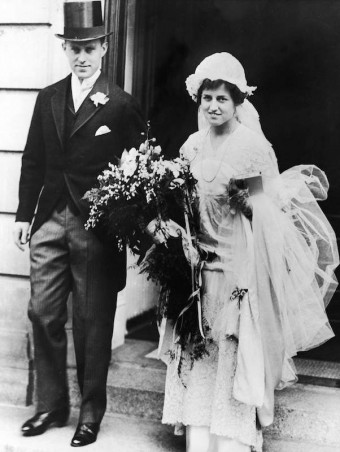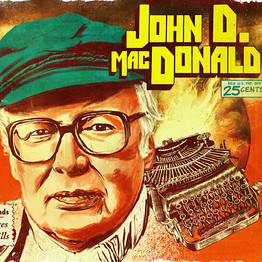As a subscriber to the Smithsonian SmartNews bulletin, I receive regular email updates on matters of interest, including history, research, science and the like. It occurs to me that readers of Bytes might enjoy a summary version of those items with the opportunity to follow up on any of them by clicking on the links provided. As I receive updates from time to time I will post a summary, here is the first.
______________________________
Did Shakespeare lose his head?
William Shakespeare died on 23 April 1616, just short of 400 years ago. His remains are interred under the floor at Holy Trinity Church in Stratford-upon-Avon, the Church having consistently refused access to the grave. Recently it allowed researchers to study the graves of Shakespeare and his family, including his wife Anne Hathaway, by way of scans. It contains to refuse permission for the grave to be opened.
The scans do not reveal metal within Shakespeare’s grave, suggesting that he was buried in a shroud. The scans, which can’t identify bone, also reveal that the head of his grave is disturbed, appearing as though the grave was excavated and then repaired with loose material. This is consistent with a story which appeared in Argosy magazine in 1879 that a doctor named Frank Chambers commissioned grave robbers to break into the church, lift the burial slab, and steal Shakespeare’s skull in 1794. Until now the story had been dismissed as rumour.
Interesting fact:
Shakespeare’s headstone bears the words:
Good friend, for Jesus' sake forbear,
To dig the dust enclosed here.
Blessed be the man that spares these stones,
And cursed be he that moves my bones.
Link:
______________________________
Winners of the Outwin Boochever Portrait Competition at the Smithsonian’s National Portrait Gallery in Washington, D.C:
Held every three years, the competition was begun by a gift from a former volunteer and benefactor Virginia Outwin Boochever, who died in 2005. It has grown in popularity each time, with 2,500 entries submitted this year in a variety of media.
Miss Everything (Unsurpassed Deliverance) by Amy Sherald
“…a clear-eyed African-American young woman with a large red flower on her hat, whose white gloves hold a comically oversized coffee cup, seemingly rising above social constructs with pure confidence.”
Caja De Memoria Viva II: Constancia Clemente de Colon by Adrian “Viajero” Roman.
“It shows the four sides of the woman’s care-worn face on a box, while inside, photographs, utensils and other items reflecting her native Puerto Rico are hung, and her voice can be heard in a recording as well.”
Michael #147973, by Rick Ashley
“ . . . photograph of his brother-in-law, who has Down syndrome and a Superman costume”
Link:
______________________________
How malaria gave us mauve:
18 year old English chemistry student William Perkin was assigned a task by his boss, August Hoffman, in 1856: investigate whether synthetic quinine could be extracted from waste products from coal tar. The need for quinine was pressing. The British Empire was expanding into tropical areas with a resultant increase in malaria. The natural source of quinine was the cinchona tree, an expensive process. Coal fuelled the Industrial Revolution, so that the coal tar was plentiful. Could a synthetic quinine be produced from it?
Perkins tried various processes, his last with a by product called aniline. All were unsuccessful and the aniline left only a sludge in the test tube. That sludge turned the test tube red and Perkin’s clothing purple, a discolouration that wouldn’t wash out. Perkin had not synthesised quinine but he had created the world’s first synthetic dye. Until then natural dyes had been made from animals and plants. Perkin’s discovery led to the development of dyes of other colours, revolutionising the worlds of fashion and fabrics world wide.
Interesting fact:
Quinine was not synthesised until 1944.
Link:
______________________________
If you drive the right speed, this musical highway will play you a song
A one-quarter mile section of Route 66 in New Mexico has ripple strips configured to play “America the Beautiful” when a vehicle drives over them, but it only works if vehicles are driven at exactly 45mph. The purpose is twofold: to encourage drivers to stay within the speed limit and to bring a little excitement to an otherwise monotonous highway.
It works by having the ripple strips spaced at varying intervals so as to create different pitched sounds.
“All of the sounds and music notes that we hear in day-to-day life are just vibrations through the air. For instance, anything that vibrates 330 times in one second will produce an E note—a guitar string, a tuning fork or even a tire. To produce an E note with a car, we had to space the rumble strips such that if driven at 45 mph for one second, the car would hit 330 strips. A bit of math tells us this is 2.4 inches between each rumble strip. After that, it’s a case of breaking down the music into exact chunks of time and applying the same technique to each space depending on what note is needed and for how long.”
- Matt Kennicott, director of communications for New Mexico Department of Transportation
“The width of the tires, what they’re made out of and the ambient noises coming from under the car’s carriage can change the way the song sounds. The song sounds different in every single vehicle.”
- Frank Sanchez, operations manager for San Bar Construction Corp.
Interesting fact:
There is also a rhythmic road in Denmark, where it is called the “Asphaltophone”, and in Japan (“Melody Road”)



















































